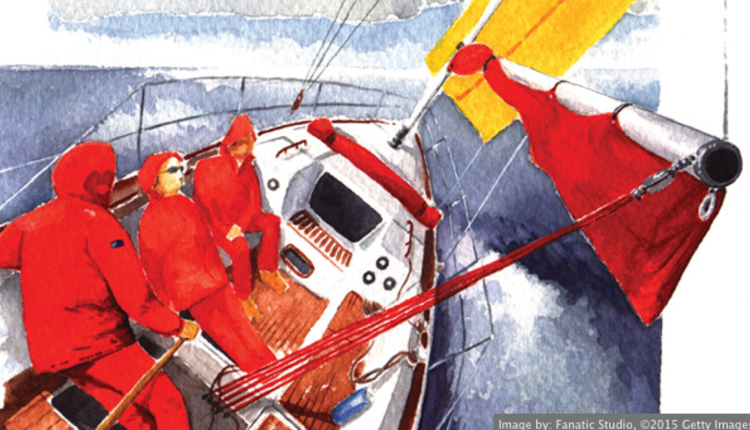In the words of Tom Friedman, "The world is flat." Globalization of business, the movement toward distributed teams and the increasing number of people working from home is a fact of life. This profoundly affects the way people interact, produce and collaborate.
People often work without ever seeing each other, through email, phone conference or shared applications. They may work together on projects for years without ever physically meeting their collaborators. We no longer have the communication clues we instinctively rely on: gesture, tone of voice or facial expression. Instead, we need to learn a new way to communicate effectively - to convey not just the sense, but the intent of our words, stripped of personal interaction.
The stable work world has shared the fate of the dinosaur. We live in a sea of technological, social and economic change. Does anyone remember how we communicated before cell phones? Yet this device has been in common use only within the last decade. In the same way, the evolution of the Internet and the array of tools for virtual collaboration, coupled with the cost of "bricks and mortar" in an economic downturn, has transformed how enterprises work. The work environment for knowledge workers has rapidly shifted from an office with live co-workers to one in which we communicate with words on a screen or through a microphone and speakers. We call this world of collaborative, virtual communication Web 2.0.
However, this evolving virtual environment brings its own set of challenges. Recognizing the critical aspects of the Web 2.0 work environment is essential for enterprises of today to enhance the collaborative experience. To successfully navigate this everchanging landscape, we must learn how to leverage the strengths of virtual communication and adapt individual communication skills. According to a Frost & Sullivan report, "Impact of Collaboration on Business Performance," this is critical because "collaboration is a key driver of overall performance of companies around the world. Its impact is twice as significant as a company's aggressiveness in pursuing new market opportunities (strategic orientation) and five times as significant as the external market environment (market turbulence). Collaboration can positively impact each of the gold standards of performance: profitability, profit growth and sales growth to determine a company overall performance in the marketplace."
WHEN WE DELIVER messages in the face-to-face (f2f) world, we communicate in the following approximate proportions: 55% visual appearance; 38% tone or mood and seven percent word content. More than 90% of what we "say" is communicated nonverbally. Given that virtual communication is often text-based, it becomes critical to add description and create a feeling tone to our voices. For communication in a virtual environment, paying attention to the details and nuances is the essential work.
At the same time, clear, effective communication has never been more important. We all have more to do, fewer people to do it with and shorter time frames in which to do it. We need to accomplish more with less and learn how to communicate effectively with people we don't know or see or have regular social interaction with.
Becoming a good communicator is hard, detailed, analytical work, but it is the most important muscle to exercise for success in both personal and professional life. Coordinating the work of many, developing a sense of teamwork and fostering collaboration are all elements of effective leadership and management.
THE FIRST STEP to effective virtual communication is acknowledging the challenges and working to overcome them. Every interaction can either build trust and set clear expectations - or have the opposite impact. In a virtual environment, clarity, consistency and brevity are tools for success. A key step is to set clear expectations defining when you are available online, your response window, main objectives, tasks and timelines and exactly what you expect from others.
For example, an initial communication's objectives are twofold: Define the work and expectations as clearly as possible, and create a sense of collaboration. Make sure you utilize the worker's name and the idea that you respect and honor this person's contribution. What is communicated is that you need their contribution to achieve results together. The introductory note also invites workers to the project. Personally inviting, welcoming and introducing each team member is the leader's job. Creating a Facebook-like virtual team space for your group to learn about each other is one way to support this. It can highlight special skills and natural genius of each person that motivates asking for assistance in others' area of expertise.
Rewarding team members when they follow through also builds trust by validating performance. A simple thank-you at the start of the communication continues this conscious teambuilding. Then follow up with the specifics of what's next.
A special skill in trust building is how to criticize constructively. Without the softening effect of facial expressions and gestures, minor criticism can easily be perceived as harsh, even flaming. One technique is to place any criticism first, following up with what's positive. These techniques are all part of building trust and setting expectations. Each communication is specific and bridge-building, creating an environment in which people give and receive respect.
YOU EAT AN elephant one bite at a time! This koan is a good reminder that whether a project spans multiple documents over years or is shorter in duration, breaking down projects into small tasks gives the team a sense of accomplishment as they achieve short-term results. Each success becomes a building block, so you should acknowledge each triumph to the whole team and praise members by name. Interim milestones keep the project on track; if you are missing targets, you can quickly understand why and get back on track.
ALONG WITH TASK breakdown, every project needs objective metrics to measure success. The team needs specific, measurable criteria to evaluate results. The only way you have to check on progress is by the deliverable. You can't see if your coworker is slaving away in the next cube, whether work is going well or if they are stuck. You only have the product to evaluate. In the world of documentation development, metrics might include the amount of source material gathered, number of pages produced, percent complete or support call reduction. The list is infinite. It's critical to establish metrics at the beginning and make sure everyone knows how you will measure success. Then track progress frequently and communicate status, addressing shortfalls as challenges to work through together. And don't forget to celebrate meeting or exceeding goals.
WITH A VIRTUAL team, reaching out and connecting with others is essential to make sure they remain engaged, committed, connected, motivated and inspired. How you reach out is a matter of personal style, but staying connected is essential to building a high-performance team. At least weekly communication is a good rule of thumb for projects that span several months.
SINCE WEB 2.0 is new territory, we have no off-the-shelf manual that says exactly what works, and we are limited only by our own creativity. However, this is a value of the virtual environment. In an evolving world, every contributor can enhance the process. Junior team members may have great ideas, and seasoned veterans may be able to add process improvements. Allowing the team to comment on and contribute to the group process is true empowerment. Being a valued contributor to a team effort is the number-one satisfaction cited in worker surveys. Encouraging and adopting ideas from your team builds a highly productive group.
A guiding principle for the virtual world is to use creativity to interpolate and approximate the best practices that parallel what works in the f2f world. Designing virtual happy hours, lunches, walks, outings, celebrations, games and contests have and continue to work. Adding visual communication (Skype, iChat, Google chat, etc.) can also greatly enhance the virtual environment, and these tools are evolving as we write.
The world of Web 2.0 is a global extension of the work environment that takes focused skills to navigate. To survive and thrive in a virtual world, acknowledge its limitations and opportunities, and work to minimize the challenges and foster creative participation. This is the route to professional and personal success.
STEWART LEVINE [resolutionworks@msn.com] is an accomplished author, having written several acclaimed books, including Getting to Resolution: Turning Conflict into Collaboration, The Book of Agreement and Collaboration 2.0.
MERYL NATCHEZ [meryl@techprose.com] is the founder of TechProse, a northern California-based consulting company that has helped clients successfully navigate change since 1982.














